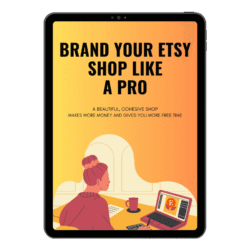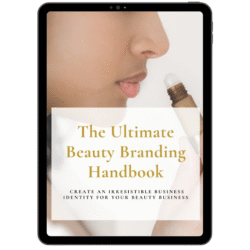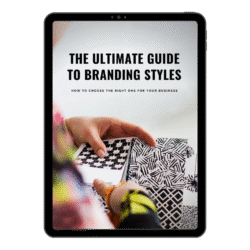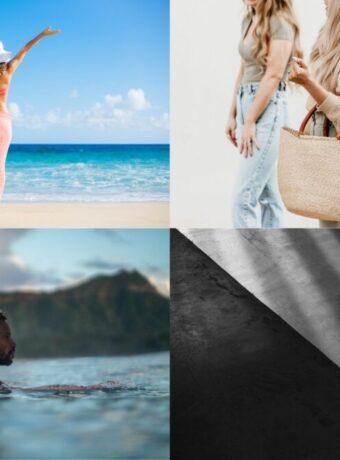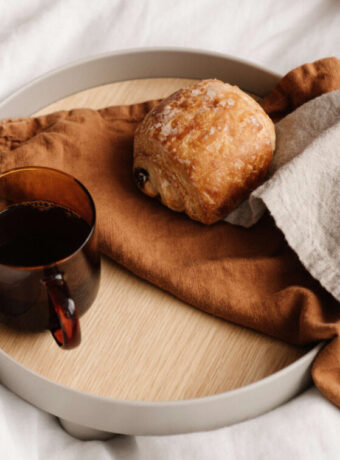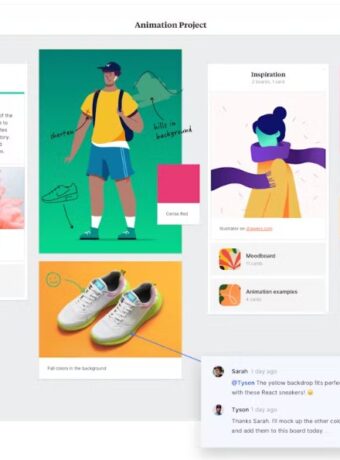Mood Board Examples
Have you ever found yourself struggling to articulate your vision for a creative project?

Or perhaps you’re looking for inspiration to kickstart a new design or branding project? That’s where mood boards come in! A mood board is a visual tool that helps to convey the tone, style, and aesthetic of a project. It’s a collection of images, colors, textures, and typography that capture the essence of what you’re trying to achieve.
A mood board is a visual tool that communicates concepts and visual ideas.
It’s essentially a collage of images, texts, and samples of objects in a composition. In the realm of social media, mood boards take a unique twist, often used by influencers, brands, and designers to curate and showcase their style, identity, and future intentions.
Instagram, for instance, is a hub for mood board enthusiasts, where users meticulously arrange photos to create an appealing aesthetic on their profile grid.
In this blog post, we’ll explore some mood board examples that will inspire you and give you ideas for your next project.
Whether you’re a graphic designer, interior designer, or just someone who loves to create, mood boards are an essential tool in your creative toolkit. So let’s dive in and see some fantastic mood board examples in action!
Check out this post: How To Make A Mood Board
Types of Mood Boards
Did you know that there are many different types of mood boards?
Each type has its own specific purpose, style, and visual elements. In this blog post, we’ll explore the different types of mood boards and their unique characteristics. Whether you’re a designer, marketer, or event planner, understanding the different types of vision boards can help you create more effective visual representations of your ideas and concepts.
Here are some of the most common types of mood boards:
Social Media Mood Board Examples
An example of a social media mood board might be a fashion influencer’s Pinterest board, where they compile a collection of images that resonate with their style philosophy.
This could include fashion-forward snapshots, color palettes, seasonal trends, and photographs of personal style icons. Similarly, a lifestyle brand might create a mood board on Instagram with a minimalist aesthetic. They might stick to a restrained color palette (say, whites, grays, and soft pinks), sharing carefully staged product photos, serene domestic scenes, inspirational quotes in chic typography, and textures that align with their design ethos.
Conversely, a graphic designer might use a mood board on Behance or Dribbble to exhibit their project inspirations, including typography, color schemes, illustrations, and UI elements.
It’s also commonplace to see businesses employ mood boards on Facebook or LinkedIn, using a mixture of team photos, industry-related images, behind-the-scenes snaps, and visualized company values to convey their organizational culture and goals.
These social media mood boards serve as a visually engaging narrative of an individual’s or brand’s identity and aspirations.

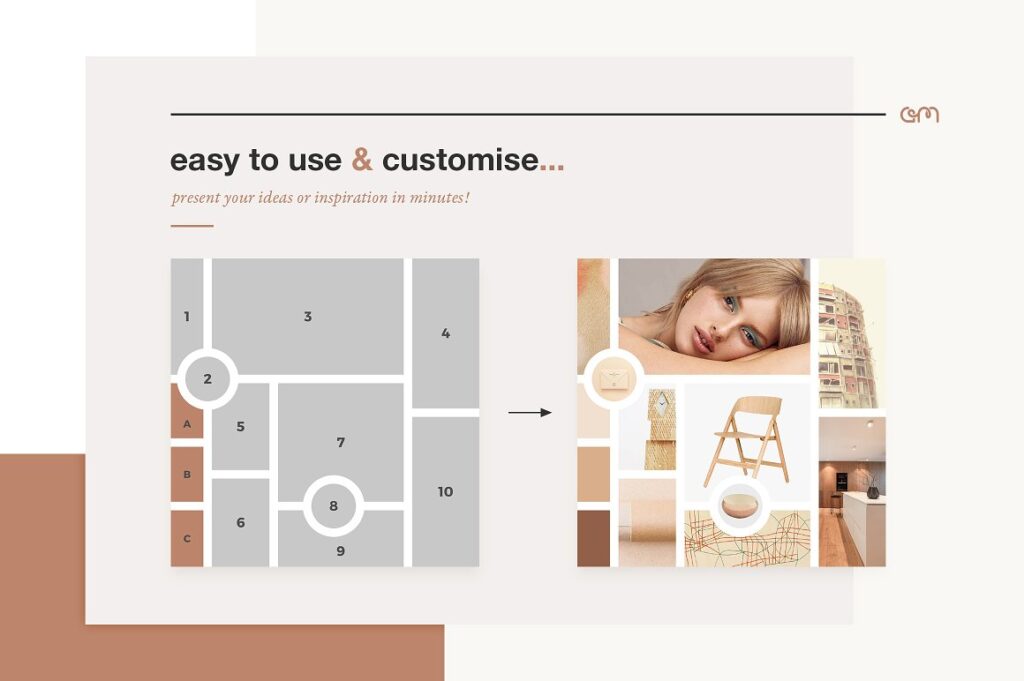
Design or Creative Mood Board Examples
Design or creative mood boards are used to gather visual inspiration for a specific design project.
They typically include a mix of images, colors, typography, and textures that capture the tone and style of the project. These boards are commonly used by graphic designers, web designers, and marketing professionals to communicate their vision to clients and stakeholders.
By creating a visual representation of their ideas, designers can ensure that everyone involved in the project is on the same page and has a clear understanding of the direction and goals.
Design or creative mood boards can be created digitally using software such as Adobe Photoshop or Illustrator, or they can be made using physical materials such as magazine clippings, fabric swatches, or paint samples.
The key is to curate a collection of visual elements that accurately represent the desired style and aesthetic of the project. Examples of elements that might be included in a design or creative mood board could be photographs, illustrations, color swatches, typography examples, texture or pattern samples, and logos or branding elements.
The mood board can be a helpful tool throughout the design process, guiding the decision-making and ensuring that the final product meets the original vision.
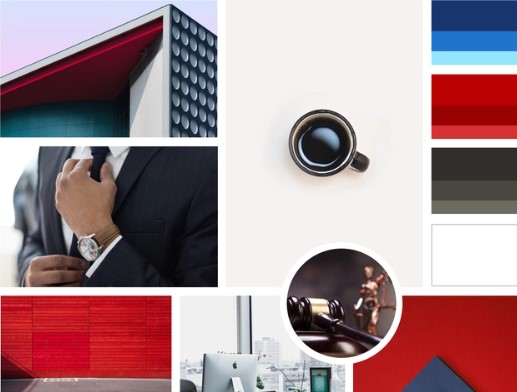
Color Palette Mood Board Examples
A color palette mood board is a collection of colors that are curated to represent the overall mood and tone of a project.
It can be used to help set the direction for a branding project, website design, or any other creative endeavor where color plays an important role. These boards can be created digitally using software such as Adobe Photoshop or Illustrator, or they can be created using physical materials such as paint swatches or fabric samples.
The key is to select colors that work well together and accurately convey the desired mood and emotion.
A color mood board typically includes a range of colors, from neutral tones to bright, bold hues.
It can also include color combinations, such as complementary or analogous color schemes, to help guide the overall design direction. Additionally, it may include examples of color usage in other design projects to illustrate how certain color combinations can work effectively.
Such mood boards can be an incredibly useful tool in the design process.
They help to ensure that the colors used in a project are consistent and cohesive, and they can also help to communicate the desired emotional impact to clients and stakeholders. Whether you’re designing a new brand or a website, a color mood board can help guide your design decisions.
They also ensure that your final product accurately represents your vision.

Material or Texture Mood Board Examples
Material or texture mood boards are used to gather visual inspiration for the tactile or material qualities of a design project.
They can be used to help establish the look and feel of a product or space, and to communicate the desired texture, pattern, or surface qualities. Material or texture mood boards can be created using physical materials such as fabric swatches, wood samples, or metal pieces, or they can be created digitally using software such as Adobe Photoshop or Illustrator.
The key is to curate a collection of materials that accurately represent the desired tactile qualities of the project.
Such boards typically include a variety of materials, from natural textures such as wood and stone to man-made textures such as metal and plastic.
It can also include pattern samples, such as wallpaper or tile patterns, to help establish a cohesive look and feel. They can be a helpful tool in the design process, guiding decisions related to materials and finishes. They can also help to communicate the desired tactile qualities to clients and stakeholders. That ensures that everyone involved in the project has a clear understanding of the direction and goals.
Maybe you’re designing a product or an interior space?
A material or texture mood board can help to establish the look and feel of the final product and ensure that it accurately represents your vision.

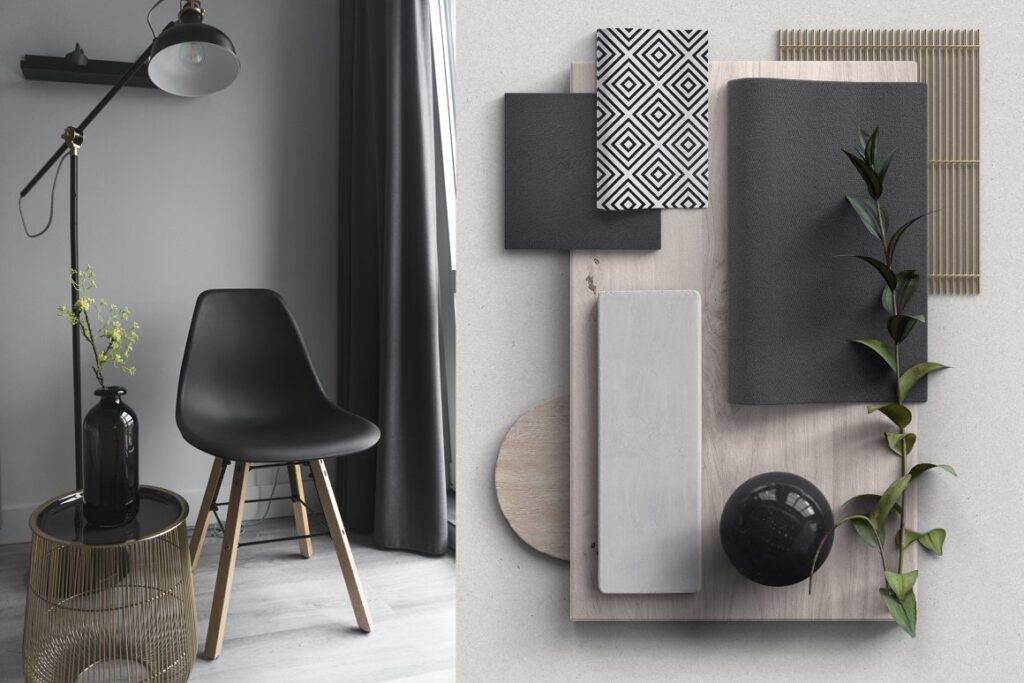
Branding Mood Board Examples
A branding mood board is a visual representation of the overall look and feel of a brand.
It is used to gather inspiration and establish the visual direction for a branding project and can be a helpful tool in communicating the desired brand identity to clients and stakeholders.
A branding vision board typically includes a range of visual elements that represent the desired brand personality, including color palettes, typography, photography style, and overall design aesthetic. It can also include examples of brand logos, patterns, and graphic elements that help to establish a cohesive visual identity.
Branding mood boards can be created digitally using software such as Adobe Photoshop or Illustrator, or they can be created using physical materials such as magazine clippings, fabric swatches, or other visual elements.
The key is to curate a collection of visual elements that accurately represent the desired brand identity. When creating such a board, designers can make sure that everyone involved in the branding project has a clear understanding of the direction and goals.
It can also serve as a reference point throughout the design process, guiding decisions related to color, typography, and overall design aesthetic.
A branding mood board helps to establish the overall look and feel of the brand and ensure that it accurately represents the desired personality and values.
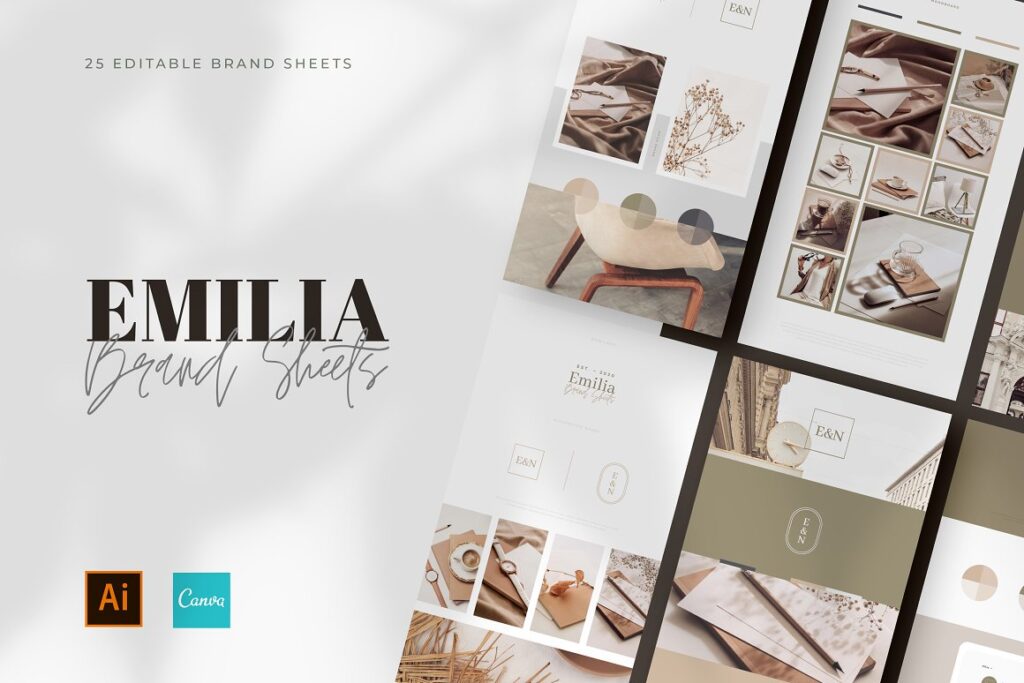

Style and Fashion Mood Board Examples
Fashion or style mood boards are used to gather visual inspiration for a specific fashion or style project, such as clothing design or personal styling.
They typically include a mix of images, colors, textures, fabrics, and accessories that capture the desired look and feel of the project. A fashion or style mood board typically includes a range of visual elements, from clothing and accessory styles to hair and makeup looks.
It can also have color palettes, fabric textures, and overall design aesthetics to help establish a cohesive look and feel.
These boards can be a helpful tool in the design process, guiding decisions related to clothing design or personal styling.
They can also help to communicate the desired style to clients and stakeholders and ensure that everyone involved in the project has a clear understanding of the direction and goals. A fashion or style mood board can help to establish the overall look and feel of the project and ensure that it accurately represents the desired style and aesthetic.

Event or Wedding Mood Board Examples
Event or wedding mood board examples are visual representations of the overall look and feel of an event, such as a wedding or corporate gathering.
It is used to gather inspiration and establish the visual direction for the event and can be a helpful tool in communicating the desired atmosphere and mood to clients and stakeholders. An event or wedding mood board typically includes a range of visual elements, including color palettes, floral arrangements, table settings, lighting design, and overall decor style.
It can also include examples of dress styles, invitation designs, and other visual elements that help to establish a cohesive theme and aesthetic.
Also, these boards can be created digitally using software such as Adobe Photoshop or Illustrator, or they can be created using physical materials such as magazine clippings, fabric swatches, or other visual elements. The key is to curate a collection of visual elements that accurately represent the desired event style and atmosphere.
By creating an event or wedding mood board, event planners and designers can ensure that everyone involved in the event has a clear understanding of the direction and goals. It can also serve as a reference point throughout the planning process, guiding decisions related to decor, lighting, floral design, and overall theme.
Whether you’re planning a wedding or a corporate event, an inspiration board for a wedding can help to establish the overall look and feel of the event and ensure that it accurately represents the desired atmosphere and mood.

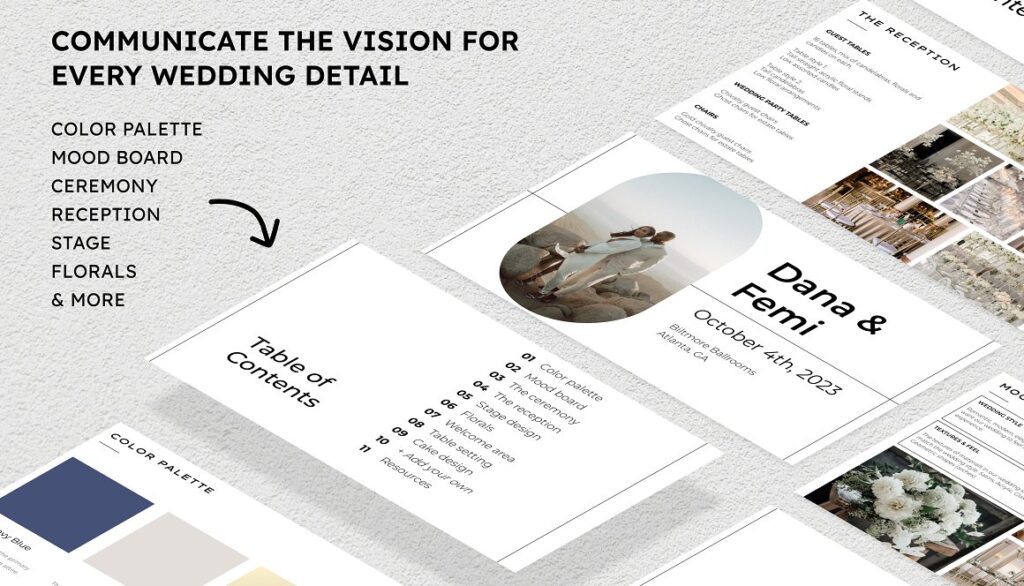
Interior Design Mood Board Examples
An interior design mood board is a visual representation of the overall look and feel of a space.
It is used to gather inspiration and establish the visual direction for an interior design project and can be a helpful tool in communicating the desired design aesthetic to clients and stakeholders.
This board typically includes a range of visual elements, including color palettes, furniture styles, fabrics, textures, and overall design aesthetic. It can also include examples of lighting design, window treatments, and other visual elements that help to establish a cohesive design theme.
Interior design boards can be created digitally using software such as Adobe Photoshop or Illustrator, or they can be created using physical materials such as fabric swatches, paint samples, or magazine clippings.
The key is to curate a collection of visual elements that accurately represent the desired design aesthetic. By creating an interior design mood board, designers can ensure that everyone involved in the project has a clear understanding of the direction and goals. It can also serve as a reference point throughout the design process, guiding decisions related to color, furniture style, and overall design aesthetic.
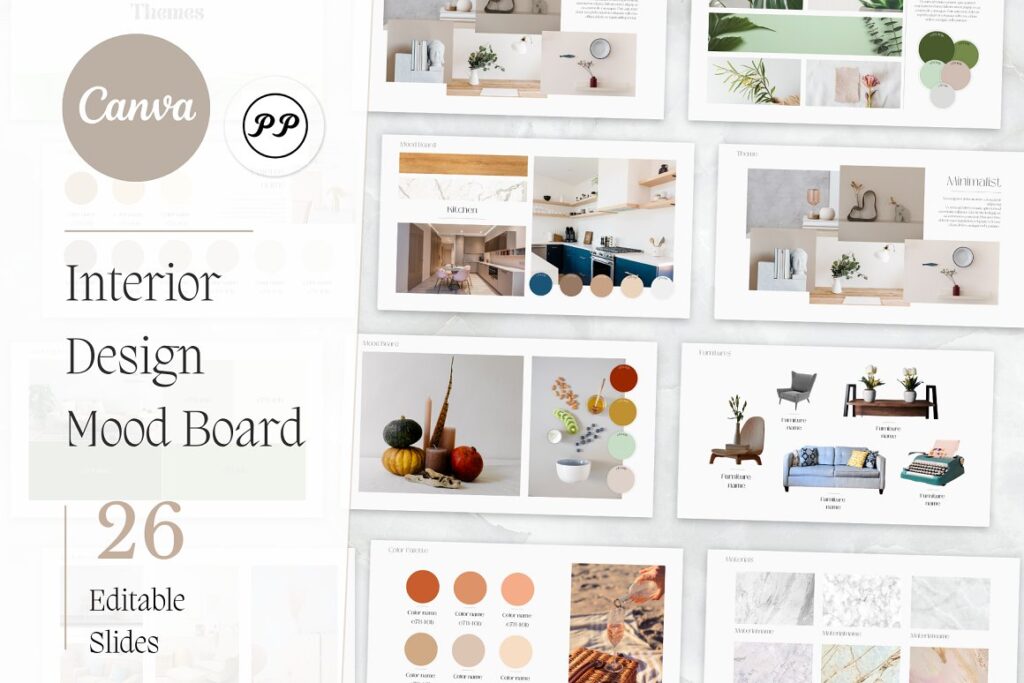

Travel or Destination Mood Board
A travel or destination mood board is a visual representation of the overall look and feel of a travel destination or trip.
It is used to gather inspiration and establish the visual direction for a travel or tourism campaign and can be a helpful tool in communicating the desired experience and atmosphere to clients and stakeholders. This board typically includes a range of visual elements, including images of the destination, landscapes, architecture, cuisine, and cultural features. It includes examples of activities, such as hiking or sightseeing, as well as transportation and lodging options, to help establish a cohesive theme and experience.
Travel or destination mood boards can be created digitally using Adobe Photoshop or Illustrator, or they can be made using physical materials such as postcards, maps, or photographs.
By creating a travel mood board, tourism marketers and travel planners can ensure that everyone involved in the project has a clear understanding of the direction and goals. It can also serve as a reference point throughout the planning process, guiding decisions related to marketing materials, social media posts, and overall branding.
These are just a few examples of the many different types of mood boards that can be created. The type of mood board you choose will depend on your project goals and the specific visual elements you want to showcase.
Mood Board Examples for Websites
Mood boards for websites are visual representations of the overall look and feel of a website.
They are used to gather inspiration and establish the visual direction for a web design project and can be a helpful tool in communicating the desired design aesthetic to clients and stakeholders. It usually includes a range of visual elements, including color palettes, typography, imagery, and overall design aesthetic.
It can also include examples of navigation design, layout styles, and other visual elements that help to establish a cohesive design theme.
Who Uses Vision Boards?
Mood boards for websites can be used by a range of professionals involved in web design and development.
This includes web designers, graphic designers, UI/UX designers, art directors, and creative directors.
Web designers use mood boards to gather inspiration and establish the visual direction for a website design project. They use mood boards to experiment with different color palettes, typography, imagery, and overall design aesthetics, and to communicate their design concepts to clients and stakeholders.
Graphic designers may also use mood boards for website projects to establish the visual direction and style of graphics and visual elements that will be used on the website.
UI/UX designers use mood boards to guide decisions related to the layout and user experience of the website. They may include examples of navigation design, layout styles, and other visual elements that help to establish a cohesive design theme.
Art directors and creative directors use mood boards to guide the overall creative vision for the website. They use mood boards to ensure that the website design is aligned with the brand identity and marketing goals of the organization.
How To Make Mood Boards for Websites?
They can be created in a variety of ways, depending on the designer’s preference and the needs of the project. Here are a few common methods:
- Digital software: Many designers create mood boards for websites using digital design software such as Adobe Photoshop or Illustrator. They can use a variety of techniques, such as creating a collage of images and design elements or creating a color palette mood board. Digital mood boards can be easily edited and shared with clients and team members.
- Physical materials: Some designers prefer to create mood boards for websites using physical materials such as magazines, fabric swatches, and paint chips. They can cut out images and design elements and arrange them on a board or paper to create a physical mood board. Physical mood boards can be useful for presenting ideas in a tangible way during in-person meetings.
- Online tools: There are a variety of online tools available for creating mood boards, such as Canva, Milanote, and Pinterest. These tools often provide a library of images and design elements that designers can use to create their mood boards. They can also be shared easily with clients and team members.
No matter the method used to create the mood board, it’s important to include a variety of design elements such as color palettes, typography, imagery, and overall design aesthetic.
The goal is to create a visual representation of the desired look and feel of the website that can guide the design process and help clients and stakeholders visualize the end product. By creating a website mood board, designers can ensure that everyone involved in the project has a clear understanding of the direction and goals. It also serves as a reference point throughout the design process, guiding decisions related to color, typography, layout, and overall design aesthetic.
Whether you’re designing a new website or refreshing an existing one, a website mood board can help to establish the overall look and feel of the website and ensure that it accurately represents the desired design aesthetic.

What Are Mood Board Samples?
Mood board samples are visual representations of a mood board that provides an example of the types of design elements that can be included.
A mood board sample typically includes a curated selection of images, colors, textures, typography, and other design elements that convey a particular mood or aesthetic. For example, a mood board sample for a fashion brand might include images of clothing, fashion accessories, and fashion models that represent the brand’s style and aesthetic. It might also include colors and textures that are associated with the brand, as well as typography and layout styles that align with the brand’s identity.
These samples can be helpful for designers who are looking for inspiration or trying to communicate their design concepts to clients and stakeholders.
They can also be used as a reference point throughout the design process to ensure that the design stays on track and aligned with the overall vision. Overall, a mood board sample provides a visual example of the types of design elements that can be included in a mood board and serves as a starting point for the creation of a mood board for a particular project or brand.
Learn more
What is Visual Branding and How It Can Help Your Business
Building a Strong Brand: The Basics of Branding 101
Brand Anatomy – What Is It, And What Are Its Key Elements?
Last Updated on 01/06/2025 by Victoria Silber





